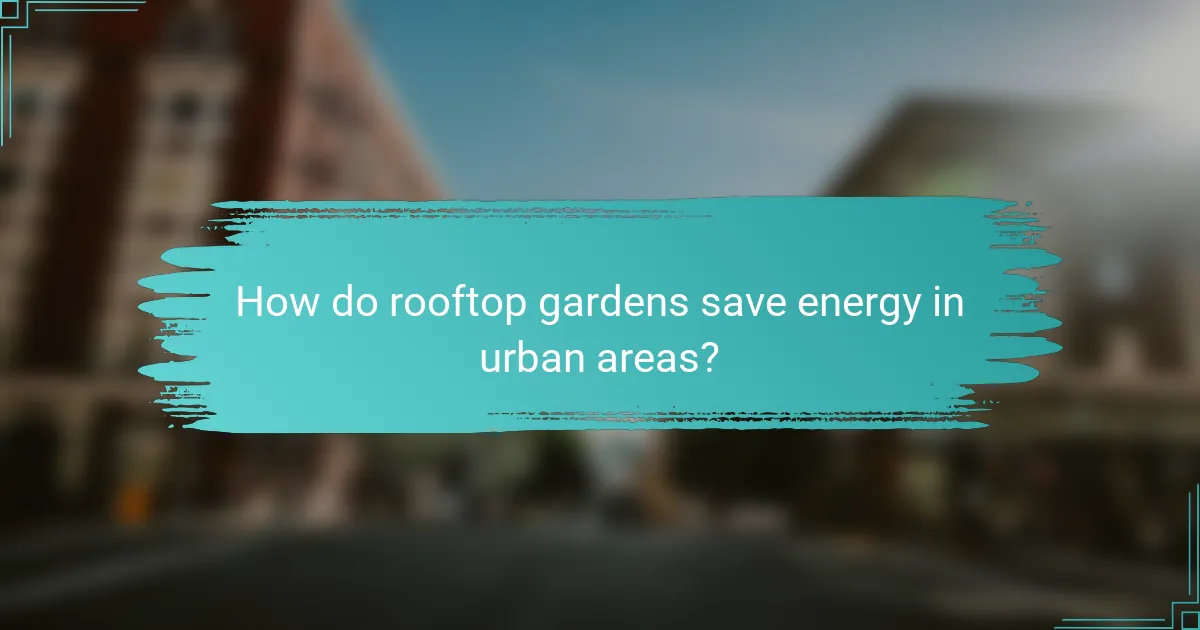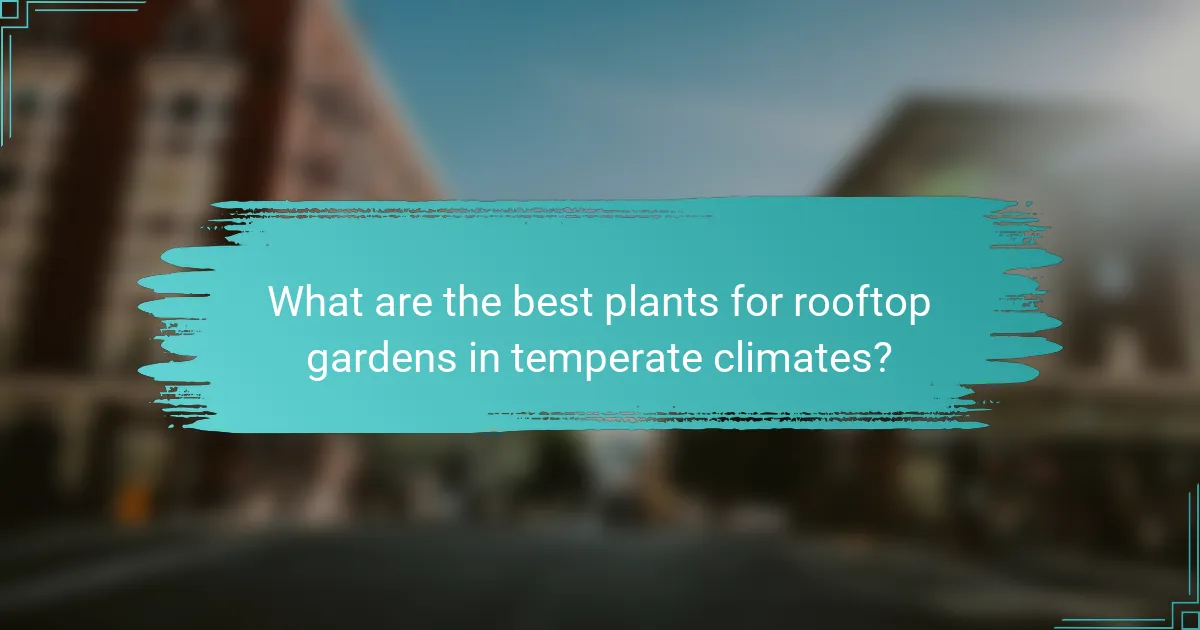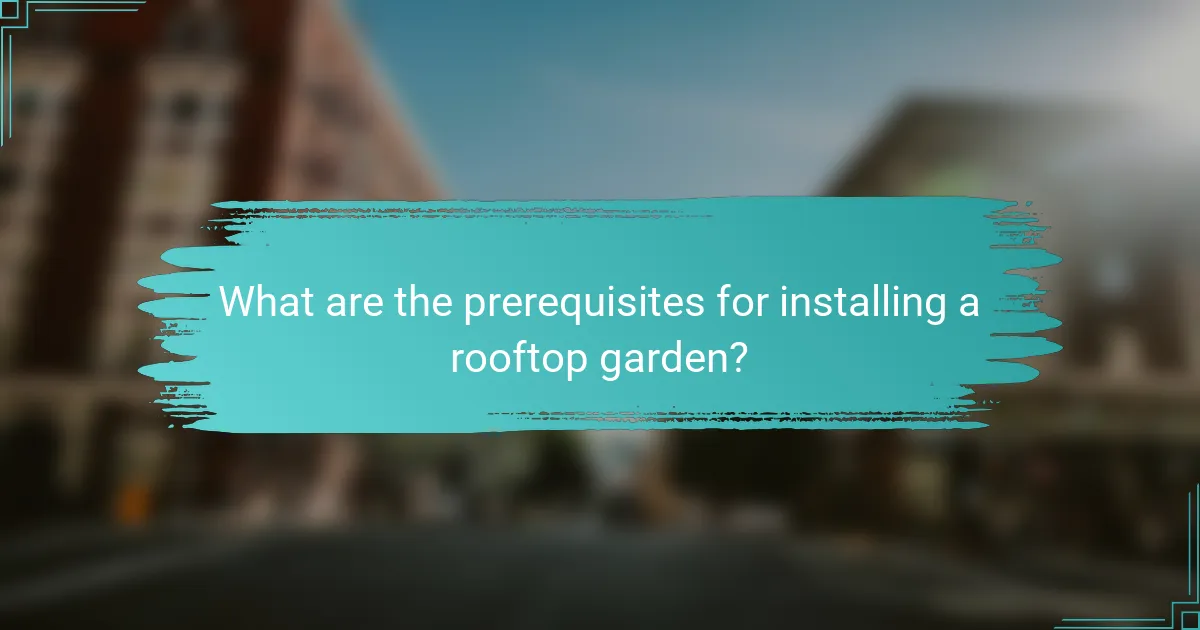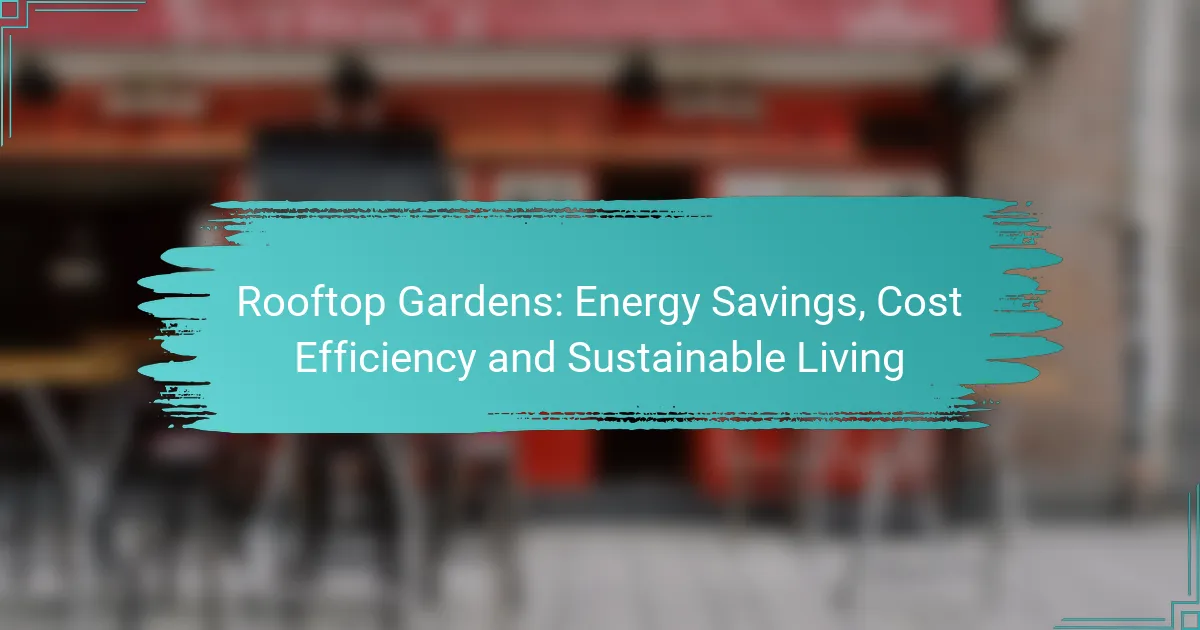Rooftop gardens are an innovative solution for urban areas, offering energy savings through improved insulation and reduced heat island effects. By lowering heating and cooling costs, these gardens not only enhance property value but also contribute to sustainable living by promoting biodiversity and improving air quality. Embracing rooftop gardens can lead to a more energy-efficient and environmentally friendly urban landscape.

How do rooftop gardens save energy in urban areas?
Rooftop gardens save energy in urban areas by enhancing insulation, mitigating the heat island effect, and promoting energy-efficient cooling. These gardens provide a natural barrier that reduces the need for heating and cooling, ultimately leading to lower energy consumption and costs.
Insulation benefits
Rooftop gardens act as effective insulators, reducing heat transfer between the building and the outside environment. This insulation helps maintain a stable indoor temperature, which can decrease heating costs in winter and cooling costs in summer.
Typically, a well-designed rooftop garden can lower indoor temperatures by several degrees, which can translate to energy savings of around 10-30% on heating and cooling bills. The thickness of the soil and the types of plants used can significantly influence these insulation benefits.
Reduction of heat island effect
Urban areas often experience the heat island effect, where built environments absorb and retain heat, leading to higher temperatures. Rooftop gardens help combat this phenomenon by providing vegetation that cools the air through evapotranspiration and shading.
By replacing traditional roofing materials with green spaces, cities can reduce ambient temperatures by several degrees, improving overall urban climate conditions. This cooling effect not only benefits individual buildings but also contributes to a more sustainable urban ecosystem.
Energy-efficient cooling
Rooftop gardens enhance energy-efficient cooling by reducing the demand for air conditioning systems. With lower outdoor temperatures, buildings can rely less on mechanical cooling, which is often a major contributor to energy costs.
In practice, buildings with rooftop gardens can experience reduced peak cooling loads, allowing for smaller, more efficient HVAC systems. This can lead to significant savings on energy bills and extend the lifespan of cooling equipment.

What are the cost efficiencies of rooftop gardens?
Rooftop gardens offer significant cost efficiencies by reducing energy expenses, increasing property value, and providing access to government incentives. These gardens can lower heating and cooling costs while enhancing the overall appeal of a property.
Long-term savings on energy bills
Rooftop gardens can lead to long-term savings on energy bills by improving insulation and reducing the urban heat island effect. By providing a natural barrier, they help maintain cooler indoor temperatures during summer and warmer conditions in winter, which can lower heating and cooling costs by 20-30% over time.
Homeowners and businesses should consider the initial investment in a rooftop garden as a long-term strategy. While the upfront costs may vary, the potential for reduced energy consumption often justifies the expense.
Government incentives and grants
Many local and national governments offer incentives and grants for installing rooftop gardens, recognizing their environmental benefits. These programs can significantly offset installation costs, making it more financially viable for property owners.
For example, in the United States, some states provide tax credits or rebates that can cover a portion of the installation expenses. Researching local regulations and available programs can reveal substantial savings opportunities.
Increased property value
Rooftop gardens can enhance property value by improving aesthetics and providing additional usable space. Properties with green roofs are often more attractive to buyers, leading to higher sale prices and quicker sales.
Studies suggest that homes with well-maintained rooftop gardens can see an increase in property value by 10-15%. This added value, combined with energy savings and potential incentives, makes rooftop gardens a smart investment for many property owners.

How do rooftop gardens contribute to sustainable living?
Rooftop gardens play a significant role in promoting sustainable living by enhancing urban environments, improving energy efficiency, and supporting ecological balance. They provide benefits such as better air quality, effective stormwater management, and increased biodiversity, making cities more livable and environmentally friendly.
Improved air quality
Rooftop gardens can significantly enhance air quality by filtering pollutants and absorbing carbon dioxide. Plants naturally take in harmful gases and release oxygen, contributing to cleaner urban air. A well-maintained rooftop garden can reduce airborne particulate matter, which is crucial in densely populated areas.
To maximize air quality benefits, choose a diverse range of plants, including native species that are well-adapted to local climates. This diversity not only improves air filtration but also increases the garden’s resilience to pests and diseases.
Stormwater management
Rooftop gardens effectively manage stormwater by absorbing rainwater, which reduces runoff and decreases the burden on urban drainage systems. This absorption helps mitigate flooding and erosion, especially during heavy rainfall events. A green roof can retain a significant portion of rainfall, often around 60-80%, depending on the design and plant selection.
Consider incorporating a drainage layer and a variety of soil depths to optimize water retention. Regular maintenance, such as checking for blockages, is essential to ensure the garden continues to function effectively in stormwater management.
Support for biodiversity
Rooftop gardens provide vital habitats for various species, including birds, insects, and other wildlife. By creating green spaces in urban settings, these gardens help to counteract habitat loss caused by urban development. They can serve as stepping stones for migratory species and support local ecosystems.
To enhance biodiversity, select a mix of flowering plants, grasses, and shrubs that attract pollinators and other beneficial organisms. Incorporating features like birdhouses or insect hotels can further support wildlife and create a thriving ecosystem on your rooftop.

What are the best plants for rooftop gardens in temperate climates?
The best plants for rooftop gardens in temperate climates are those that can thrive in varying temperatures and conditions while providing aesthetic and functional benefits. Consider native species, drought-resistant varieties, and edible plants to maximize your garden’s potential.
Native plant species
Native plant species are well-adapted to local conditions, making them ideal for rooftop gardens in temperate climates. They typically require less maintenance and water, as they are accustomed to the local soil and weather patterns.
Examples of native plants include coneflowers, black-eyed Susans, and various types of ornamental grasses. Incorporating these species can enhance biodiversity and attract local pollinators, contributing to a healthier ecosystem.
Drought-resistant varieties
Drought-resistant plants are crucial for rooftop gardens, especially in areas that may experience dry spells. These plants can survive with minimal water, reducing the need for frequent irrigation.
Consider varieties like sedums, lavender, and succulents, which thrive in dry conditions. Implementing a drip irrigation system can further optimize water usage, ensuring your garden remains vibrant without excessive water consumption.
Vegetable and herb options
Growing vegetables and herbs in rooftop gardens can provide fresh produce while enhancing your gardening experience. Many vegetables and herbs are suitable for temperate climates and can thrive in containers or raised beds.
Popular choices include tomatoes, peppers, basil, and parsley. When selecting plants, consider their sunlight requirements and ensure they receive adequate light, ideally six to eight hours daily. Regularly check for pests and diseases to maintain a healthy garden.

What are the prerequisites for installing a rooftop garden?
Installing a rooftop garden requires careful consideration of several key factors, including structural integrity, local regulations, and sunlight availability. Addressing these prerequisites ensures a successful and sustainable garden installation.
Structural assessment of the building
A thorough structural assessment is crucial before installing a rooftop garden. This evaluation should confirm that the building can support the additional weight of soil, plants, and water, which can range from hundreds to thousands of kilograms depending on the garden’s design.
Engaging a qualified structural engineer can help identify any necessary reinforcements or modifications. It’s essential to ensure that the roof’s materials and design are compatible with the intended garden setup to avoid damage or safety hazards.
Local zoning regulations
Understanding local zoning regulations is vital for rooftop garden installations. These regulations can dictate the types of structures allowed, height restrictions, and even the types of plants that can be grown.
Before proceeding, check with local authorities or zoning boards to ensure compliance. This step can help avoid fines or the need to remove the garden after installation due to regulatory violations.
Access to sunlight
Access to sunlight is a critical factor for the success of a rooftop garden. Most plants require at least six hours of direct sunlight daily to thrive, so assessing the roof’s orientation and any potential obstructions is necessary.
Consider using a sun chart or conducting a shadow analysis to determine the best locations for planting. If sunlight is limited, select shade-tolerant plants or consider installing reflective surfaces to enhance light availability.
